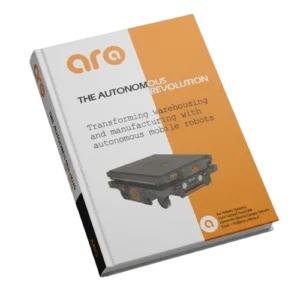Hospital Autonomy
Autonomous robot technology is now accessible and ready for application in medical care. Today, robot autonomation is becoming an affordable solution in addressing labour shortages, and the sophistication behind these machines enables their accessibility to different fields of industry, including healthcare. These machines are characterized by their ability to autonomously accomplish a sequence of objects, independent of human intervention. Their environmental awareness and safety features allow them to operate in busy environments, such as hospitals. The technology is well suited for the healthcare industry because of the apparent stress the covid pandemic has placed on the Canadian (and global) healthcare system(s). This stress is not limited to finance, as nurses, physicians, and personal support staff are suffering from burnout and exposure to health hazards. Therefore, having a multi-functional robot offers a working companion that can assist trained personnel where the workload is strained or unbalanced. By adapting robots into the workforce, industries can improve operational efficiencies and, in the case of hospitals, reduce personal exposure to health hazards while relaxing the heavy burden these individuals are required to face.
With the demands of an ongoing global pandemic mixed with modern inflation, labour and equipment costs are high. For this reason, business leaders are forced to re-evaluate how to manage costs, improve operational efficiencies, and maintain a high standard of personal health and safety for employees. In terms of health care, this has resulted in the alarming uptake in responsibilities, where employees are forced to shoulder more responsibilities while still maintaining a high level of patient care. Although robots have yet to reach credibility as direct tools to nurses and doctors, automation in healthcare can take the shape of inventory management and general logistics that involves repetitive tasks. For example, autonomous robots can now perform delivery and transportation of medication/medical supplies, laboratory specimens, linens, sanitation services, meals, etc.
Although human operation is still essential, a robotic working companion enables worker productivity, safety, and improves time-sensitive patient care. This is advantageous because a robot can support heavier payloads, work around the clock, and can be accessible/controlled remotely. The equipped technology provides live map updating and obstacle avoidance. Meaning the trained operator can confidently assign tasks without concern that the robot will be in the way of others. They can navigate around new obstacles, move out of the way in emergency scenarios, and even find alternate routes without direct supervision. Navigation aside, upon arrival at a destination they can wait until the payload has accomplished its task before moving onto the next objective (for example diary linen retrieval), or they can wait for human dismal (for example, meal delivery.). Similarly, with heightened standards of cleanliness brought on by COVID, these working companions can take on sanitation roles to relieve human exposure to health hazards. For example, a hospital can mount a sanitation module, which can navigate between rooms/hallways to clean high-risk surfaces. Effectively reducing the time support staff are required to repeat the task and maintain a high level of cleanliness. These remotely accessible companions enable physical distancing of personnel, helps reduce the spread of germs and can be used to identify patients in distress or conditions that require trained human intervention.
With the increased cases of Covid 19, we have seen the importance of having a reliable labour source, and robots are reliable labour that can work 24/7. With the plight of global viruses, the importance of having a reliable/affordable labour source while maintaining personal health and safety will become an increasing standard in industries. Robots have arrived to meet the demand, offering a robust that can safely operate 24/7. These adaptable working companions are equipped with payloads to meet industry demands and are readily available to meet growing concerns in health care. Delegating tasks to autonomation enables their human coworkers time for higher-priority assignments; effectively reducing costs, improving sanitation, and overall patient care.
Image Credit: Jonathan Borba


